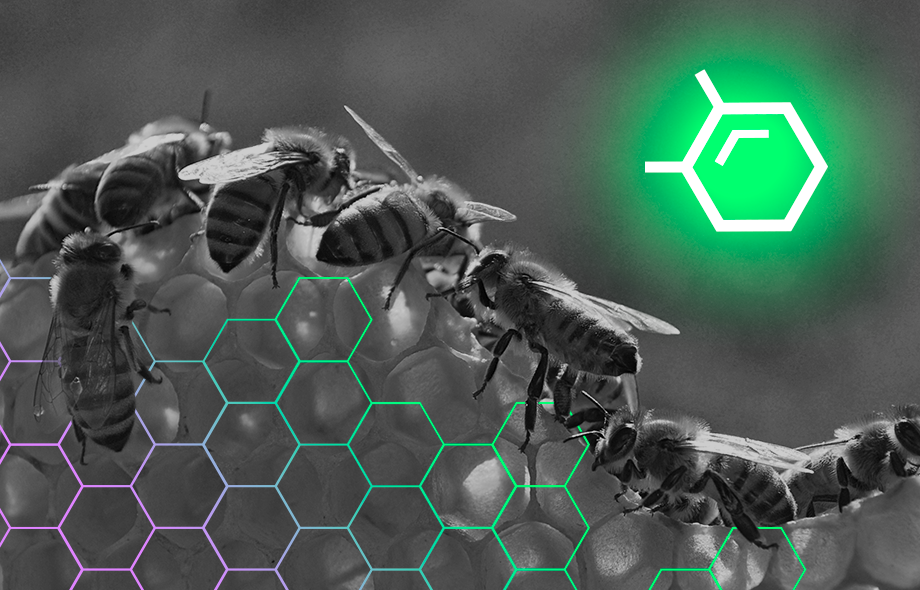 Back to blog
Back to blog
NFT in business, culture and the arts: key features and success factors of NFT projects
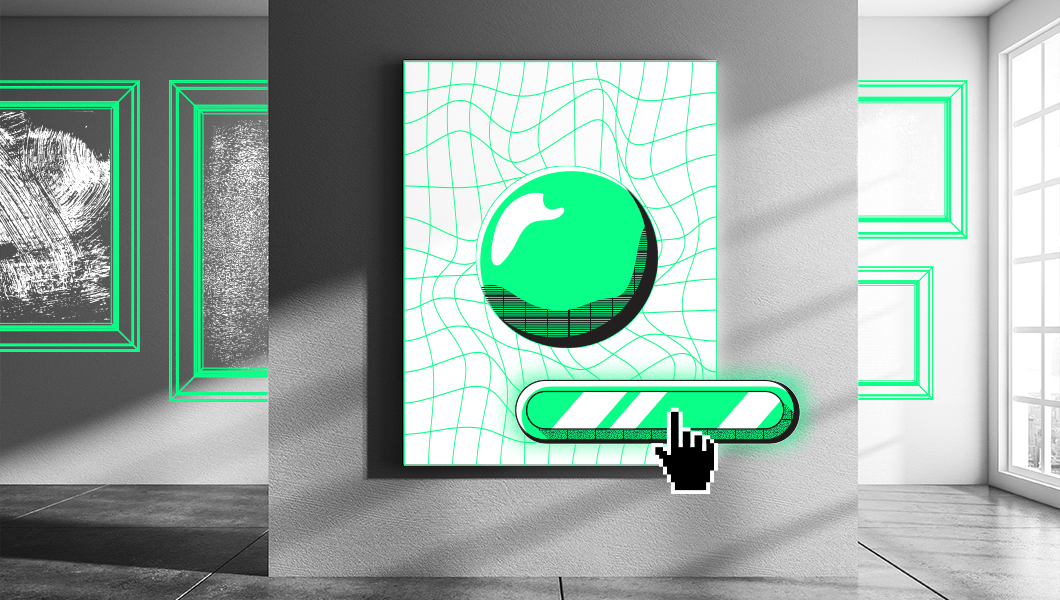

Szymon Paroszkiewicz
Co-founder at Develtio
29.12.2021 • 17 min read
If we were to compare the level of NFT development to human development, I would say that the technology is currently at the kindergarten stage, and the first projects like Crytpo Kitties were in their infancy. Thus, it is to be expected that it might be several years before NFT develops on a massive scale and brings real benefits. Remember, however, that the greatest benefits are always provided by the upward trend of the market. When the market is already saturated with a given technology and “everyone has it“, it is hard to create something original or make money because we have to compete with others.
The whole cryptocurrency movement, including NFT, reminds me of the days when we were one the first in Poland to help companies develop campaigns using social media or YouTube. Most companies at the beginning considered these channels as childish and with no future. Those who cooperated with us generated millions of views with minimal financial outlays. Although nowadays every business is using what was then called Web 2.0 (social, blogs, online video, twitter, digg), it has never been possible to make as much money on it as when such solutions were still in the development stage. Right now we are witnessing the birth of Web 3.0, and NFT is one of the most prominent solutions behind this new wave of “internet of money“.
Dollar value of NFT
Startups that are working on NFT-related solutions have raised over $662 million in funding so far. OpenSea – one of the largest NFT marketplaces – has raised $100 million and is currently valued at $1.5 billion.
Some time ago, I thought it was too late to establish yourself with your projects in the NFT world. I then decided to check the market statistics. The number of unique NFT wallets best shows us how fresh the technology is. This might give us an idea of how many people in the world actually participate in this market. The number is estimated to be around 200,000 to 300,000.
Thus, it can be seen that the NFT market is only at the very beginning of its development. The overall sales of the OpenSea platform were $10 billion, while projects like Rarible and SuperRare.co had volumes of 264 and 177 million respectively. These figures will probably be much higher by the time you read this. The total market is estimated at around $13.25 billion.
Why are NFTs important, and they will be even more so?
The current NFT market is now mainly driven by the big money made by cryptocurrency holders. However, we can already see the first examples demonstrating that the old, conservative world of art trade is beginning to catch up with the new trend. An increasing number of artists are publishing their creations – paintings, photographs, graphics, video art, music – in the form of NFT.
In addition, NFT brings to the art world the possibility of implementing multidimensional projects that cross the digital / crypto / IRL boundary. This has already been done by one of my favorite artists who perfectly feels the pulse of the modern world – Tom Sachs. The “Rocket Factory” project uses NFTs as components to assemble physical rockets, giving collectors the opportunity to build their own machine.
Sachs’ NFT rockets are composed of three components: a Nose Cone, a Body, and a Tail Assembly. Each piece is branded (Hello Kitty, Wonder Bread, Snickers, etc.), which gives them different levels of uniqueness. Once you have collected 3 elements, you can assemble the rocket through the Rocket Factory website. The rockets are divided into: Frankenrocket which has a cone, body and tail with different branding and Perfect Rocket with a single logo on all the pieces. Once the rocket is formed, the NFTs of the individual components are burned. Therefore, there are only 1,000 potential rockets (but hundreds of thousands of possibilities) built from 3,000 components.
The assembled rocket can be launched into the sky by collectors – the team will create a physical object based on the NFT model and set a launch day.
After the rocket is launched, it will be delivered to the owner by traditional mail.
For me, Sachs’ art project is the perfect combination of physical experience, the possibilities offered by new technology, memes, artistic invention, and a humorous approach to himself and his art.
What can NFT be used for besides art?
Limiting the role of NFT to just the art market would be a huge oversight of the actual scope of what we can use the new technology for. Below I have listed what else can be done with NFT. The list is certainly not exhaustive and new applications will emerge over time.
- The opportunity to own unique items in the gaming world and metaverse.
- The only indisputable proof of the authenticity of an artwork.
- A deed to real property or other physical object.
- NFT as a ticket.
- Membership card in the form of NFT.
- Token as a certificate of originality of a given idea or solution.
- A way to monetize (royalties) the work of creators, artists.
- NFT as a souvenir.
- NFT collector’s edition.
NFT gives you the ability to own unique objects in the gaming environment and the metaverse
The civilized man has a rather perverse nature and even in the Internet environment, where creating a copy costs nothing, they will come up with solutions that allow them to own something for money. It can be motivated by a variety of reasons, but the need for status and self-identification certainly comes to the fore. Self-identification usually requires some effort or contribution from us. In the case of gaming and the Internet’s future – metaverse, which we have written about many times in our GreenLetter, this effort can take a creative form (I did something myself) or a financial form (I bought this token for my work, I was an early-adopter, I won it).
The virtual objects we will use in the future will be representations of the NFTs we own. I think the luxury goods of the virtual world will be even more expensive than the status symbols of the current reality – Hermes handbags, limited edition AirMax or even expensive cars. Why do I think this? It’s simple: because more people can see your status symbol on the Internet. The item represented by NFT can be transferred from one game to another, or to chat rooms, online communities, and other virtual spaces. In short, your Fortnite character could be both your avatar on Discord and your entry pass to specific communities. Items owned in the game worlds will be sold on open markets such as OpenSea.
The only indisputable proof of the authenticity of an artwork
What would happen if someone in China presented irrefutable historical proof that the version of the Mona Lisa they own is authentic and that the painting hanging in the Louvre is simply a perfect copy? How would the art and cultural world react to this? Which version would be more valuable? What would it mean for the perception of the authenticity of artworks? At the moment, NFT is probably the only fully indisputable way to certify originality. It cannot be forged, changed or destroyed. It is also fully transparent – we know who owned the NFT from the moment it was created (the artist/creator), who then bought it – until the present moment.
Non-Fungible Token as a deed to real property or other physical object
An application similar to the one described above, but involving elements of our world so strongly sanctioned by law as land records and other property deeds. An archive can be destroyed and a centralized database system attacked or altered by corrupt officials. A decentralized system based on NFT is ultimately incontestable and secure.
NFT as a ticket
I don’t know about you, but I still have tickets for concerts and other events from the past that were important to me. NFT is the best form of ticket – it can come in the form of a piece of music, a video, an image or any medium. It will not deteriorate over time and is the ultimate testament to the fact that you attended an event. Being stored in your crypto portfolio it indicates that you are a fan of a particular artist.
NFT as a membership card
A ticket-like application of NFT is a membership card that allows entry to some place or online community. NFTs are now commonly used to provide access to hidden communication channels within Discord (a sort of Slack of the gaming and crypto world) or to validate actual membership in a given club or group of people. I can imagine that in the future NFTs will be used in solutions like Miles and More and Starbucks Rewards.
NFT as a proof of novelty and priority of a artwork, idea, solution
When talking to artists, sooner or later we will be faced with the issue of plagiarism and originality of ideas. It even happens that the works of other, lesser-known artists are sometimes used by famous artists who assert the originality of these works or ideas by virtue of their authority. A less popular person can do less. NFT is changing the way things are done. When you publish your original work as an NFT, it has a clear priority in time over its derivatives and an undeniable certification of authorship. It seems to me that this will allow more creators to reach a far wider audience, while making it harder for well-established players to get away with their unethical behavior.
Memorabilia and donation certificates in the form of NFT
Suppose you own an art gallery, museum, or any other institution that participates in broadly defined culture. NFTs give such organizations an incredible opportunity to sell digital memorabilia. For me, an NFT from a museum depicting a poster from an exhibition is a unique souvenir of visiting that place. Such tokens can also be used as a certificate to show that I support a particular institution. Now if I ever want to check if, e.g. a given bank contributes to Polish culture, instead of digging through documents and reports, I will simply look at the public portfolio, where I will find all the NFT contributions for particular artists or institutions. Clearly and transparently.
NFT as a collector’s item
Finally, I present a feature that is currently the most widespread use of non-fungible tokens. Early NFT collector’s editions are selling at exorbitant multi-million dollar prices. Projects such as Crypto Punks, Bored Ape Yacht Club or Loot are bringing together engaged communities that are even organizing their own conventions (e.g. BAYC), where entry is only possible upon showing that you own a given token.
NFT collectibles have already been used as the basis for computer games, comic books, and recently there has also been talk of video productions. It was the collectors who started the crazy growth of NFT popularity and their exorbitant prices. Nowadays, there are probably a dozen or so new collections a day published on various blockchains. Most reasonable people in the industry, such as Gary Vee, predict that 99% of these projects will go down to minimal values, and only a few will survive. Given the quality of the “works” that are being created within many of these collections, it is hard to disagree. Keep in mind, though, that 1% is still a lot in the context of the number of NFTs being created.
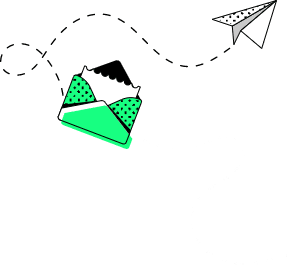
Examples of NFTs that go beyond collector value:
Crypto stamp
Crypto stamp was a project by the Austrian Postal Service that offered buyers of traditional stamps a journey into the world of digital collectibles. Each physical stamp contained a section with an opaque, scratch-off coating with a private key (a sort of PIN) underneath that unlocked access to a small amount of ETH and the digital equivalent of the stamp. The owner could then sell it on OpenSea. This project was particularly interesting because it combined the uniqueness of a digital good with a useful physical good and involved an existing community of collectors.

NBA Top Shots – new format of collector cards
NBA Top Shot is an NFT collection popular among basketball fans, featuring the most memorable moments from the game in video and photo form. Each medium is limited – often the rarest ones are the most valuable. For example, a video of LeBron’s spectacular action was bought by someone for over $387,000. NFT from NBA is a great way to generate additional value from existing digital assets and engage fans in a new form of collecting.
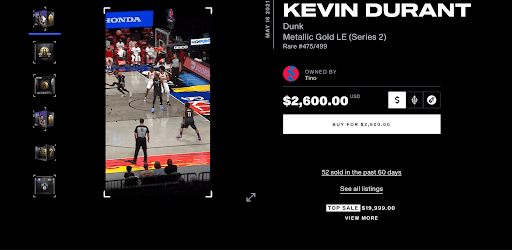
Stella Artois horse racing campaign
The Stella Artois beer brand offered 50 NFTs in the form of digital horses, ready for virtual racing. This is an example that NFT is not necessarily just about selling virtual works. The brand has also created a digital race track with their logo, and NFT horse owners could participate in virtual races for a chance to win some ETH.

NFT Hot Wheels
Mattel, the famous toy manufacturer, has released three Hot Wheels models (Twin Mill, Deora II and Bone Shaker) in digital form. This is a real treat for fans of these models and an opportunity to expand their physical collection.
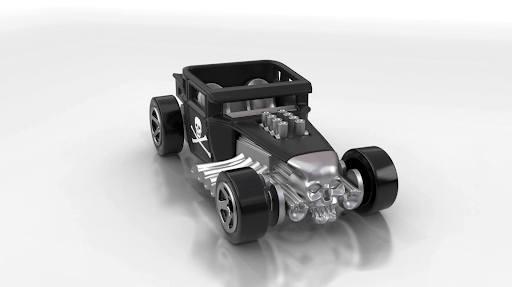
Glenfiddich and limited NFT
Glenfiddich, the famous Scotch whisky brand, has released a series of 15 limited edition NFT liquors. Each NFT corresponds to a physical bottle of whisky from 1973. The virtual liquors appeared on BlockBar, the world’s first direct-to-consumer platform offering NFTs exclusively from luxury spirits brands.
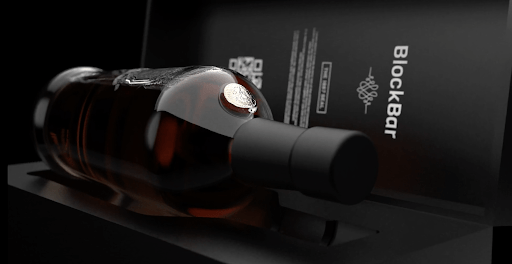
McDonald’s and McRib NFT
McDonald’s has brought the legendary McRib sandwich back to life in the US as NFT. The fast food chain gave away tokens on Twitter – only 10 lucky people could get a digital barbecue-flavored pork sandwich. McRib in token form looks like a card with a photo of the famous burger surrounded by a glowing frame. The European branch of McDonald’s has also experimented with NFT before.

Burberry with Blankos Block Party
Burberry brand has teamed up with game developer, Mythical Games, to launch NFT collection in their flagship title, Blankos Block Part. The brand had previously developed the game B Bounce and on the wave of its popularity decided to go further into the digital world. The game by Mythical Games featured a limited number of Blanko sharks with the brand’s logo. Importantly, Burberry’s NFT is not based on an energy-intensive Proof of Work cryptocurrency model, like Ethereum, but operates through the private EOSIO protocol, which uses a more energy-efficient Proof of Authority model.

Factors contributing to the success of an NFT project
What is the purpose of the project?
The NFT project may intend to provide a unique token and monetize the token itself. Alternatively, the token may just be an intermediate element of a larger business or artistic idea. It’s a good idea to start by defining your priorities and thinking about what you really want to accomplish by creating an NFT. Here are some questions to ask yourself when defining the goal of our NFT project:
- What is the planned duration of the project?
- Is the NFT you create an artwork or rather a collector’s item?
- Are the funds raised from the sale of NFT to be invested in some project using NFT data as a ticket, coupon, mintpasss, etc.?
- What kind of people would I like to engage and include in the community around my NFT?
Project target group
It is worth remembering that people who buy, own and use NFT are still a very narrow, elite group. There are a lot of people who got rich on the cryptocurrency boom and, therefore, have a lot of crypto “money” which they are willing to invest and allocate to projects like NFT, DeFi, etc.
The second target audience we may be considering is people who will be introduced to the world of crypto through our NFT project. For these people we need to create tutorials, guides, and other tools to help them learn about the crypto reality. This is a difficult process, but at the same time very rewarding – there is a really high probability that the people we introduce to crypto first will become our real fans.
The third group of people that our project may concern is what I would call “bystanders”: they are not into crypto, they are not going to buy NFT in the short term, but they will learn about our company, personal brand or product through the project. Non-fungible tokens generate a lot of buzz in the media, even those who do not deal with this topic on a daily basis. The best example is the Visa card operator’s purchase of Crypto Punk, generating a multi-million dollar media equivalent in news coverage about the company at a cost of $150,000.
When developing our project, we should therefore keep these three target groups in mind and adequately plan for their inclusion in the success of our project as well as identify narrower, tactical target groups.
The community around the NFT project
Crypto projects in most cases do not require advertising. Once a certain critical mass is reached among the community we want to serve with a given NFT, it will be the participants and token holders themselves who will perform many of the functions that the marketing team would face in a standard project. People who own something of value tend to take actions to increase that value, which means telling others about the NFT, promoting it on social media, and building a positive image of the project. By owning a token, you are a stakeholder in the brand of a particular NFT and you want to make the brand stronger and more valuable.
The conclusion is very simple: community marketing is the most important part of any NFT project. The people buying your NFT are not driven by a desire for “consumption”. They rather want to hold a particular piece of culture and belong to a group of people that, although it may be very diverse, has something in common: Your NFT.
Thus, it is crucial to select an excellent community manager for your team who will be responsible for communication on Discord, Twitter and other channels. This person must have a good understanding of your target audience and their motivation to participate in your project.
Community marketing shares many of the principles and patterns we know from social media marketing. In fact, we can say that this type of activity is social media on steroids – the group is more cohesive, narrower, more engaged and actually takes control of the promotion of a given project at some point. The closest comparison here might be some musician’s fan club or Harley clubs.
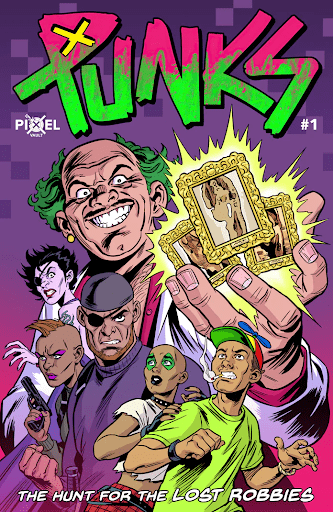
The narrative sense of the project
Not all NFTs are created with a specific narrative or story behind them. However, all successful NFTs sooner or later develop such a narrative. If the author of a given token doesn’t develop a backstory for the entire project, the community will do it.
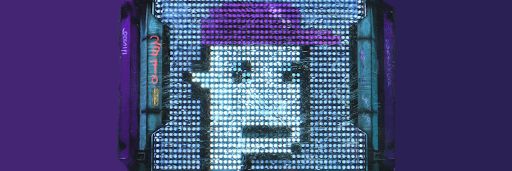
This happened in the case of Crypto Punks. The community creates comics and stories featuring them, and there are even Twitter accounts established for individual punks.
The narrative not only allows for a better understanding of the project’s idea, its spirit and goals, but also provides opportunities to develop the project concept in the future. The NFT edition can become a background for both business projects (e.g. merch) and further cultural elements: stories, animations, music, films, games or clubs.
Utility of the NFT project
The utility aspect of a given NFT is particularly important in strictly commercial projects that aim to create value for a given company or brand. The above text suggests dozens of different uses for NFT in marketing, customer service or even strictly operational activities (NFT as a warranty card?), so I will not repeat myself here. It is worth remembering that NFT can be more than just a cool image for our company.
Selection of crypto technologies and solutions
This article is written for people who deal with the business and soft, artistic side of NFT projects, which I believe is already more important than the technology side itself. Remember though that in the crypto world there is no room for mistakes. Every weakness, gap, oversight within our smart contract will be exploited 100%. Below you will find the major issues that need to be addressed in any NFT project:
- Which blockchain should we use for our NFT (Ethereum, Solana, Tezos, etc.)? This choice has a number of consequences, such as the cost of trading a given NFT, the cost of minting, the carbon footprint, etc.
- Will users be able to mint our NFTs on their own through our website or other solutions, or will we rather make them available on a marketplace, such as OpenSea?
- Whether, when and how we will publish the statistics of our collection? This involves the frequency of occurrence of particular elements of our NFT. We use tools like rarity.tools or howrare.is for this purpose.
- Do we want to allow “gas auctions” in the minting process, i.e. very high network fees due to strong interest in the project? An example is The Sevens – a collection of 7,000 profile pictures that enjoyed tremendous demand. With an initial price of 0.07 ETH per token, the demand was so high that participants started to bid for priority purchases using the network fee they were willing to pay. The median participant paid about 1.49 ETH per NFT, and the top 5% of individuals paid for each NFT the gas fee of more than 2.44 ETH.
- If we avoid gas auctions or mint a token on blockchains that are “cheap” to use – how do we deal with the bot issue?
The above technical issues are just the tip of the iceberg. However, keep in mind that the industry already has its standards for handling these challenges and we shouldn’t be scared off by them.
Communication channels in NFT projects
WWW – project aggregator and NFT minting site
Your project website is where people will be able to mint your NFT, find information about the team behind it, see galleries and a description of the project.
Discord and your NFT project server
The Discord server is the project’s communication backbone for any NFT effort. Discord is where most of the cryptocurrency, NFT and other crypto-technology communities communicate with each other. Don’t even start your project without Discord – it’s a waste of time. Good community management within the server and ongoing communication with its users is a total must.
Crypto Twitter
Crypto Twitter is not a separate version of Twitter, but simply a community of people interested in crypto and NFT projects following each other. In my opinion, this is currently one of the most fascinating places on the Internet, where great ideas are born and interesting discussions take place every day. If you want your project to be popular, it needs be discussed within Crypto Twitter. You need to have a project account and interact with people and crypto “institutions” within this service. One like or RT from the right person can determine the success of your entire venture.
Instagram in NFT projects
Instagram is a medium that the NFT community enjoys using. It’s a good place to showcase your project to a wider audience and extend the reach of your communications.
Facebook in NFT?
No kidding. Facebook is for boomers.
NFT and CO2
Speaking of NFT solutions, it is worth mentioning the problem of CO2 emissions caused by their production, which has been blown out of all proportion. First, NFT can be developed on blockchains such as Tezos or Solana, whose CO2 emissions and energy consumption are at very low levels. I suppose that painting a work on a traditional canvas leaves a larger carbon footprint.
When it comes to high network costs, and thus energy and carbon costs, only the Ethereum blockchain seems to be an issue. However, this is a temporary situation, as ETH is known to be transitioning to environmentally friendly proof of stake technology right now. Eth2 based on proof of stake for transactions will use less power than an operator such as Visa. 100,000 Visa transactions consume about 149 kWh, while the new Ethereum at the same volume will consume about 17.4 kWh, which is 11% of Visa’s consumption. Implementing more Ethereum scaling solutions will further reduce energy consumption.
Summary
This time I decided to summarize the article in 5 simple points as the text above is quite extensive.
- Crypto in general and, in particular, NFT technology is still at a very early stage of development. The current ROI from NFT engagement is very high.
- NFT project communication differs significantly from traditional marketing campaigns.
- The community to which NFT projects are targeted is key. Plus answering questions about how it will support its development and give it a “skeleton” of a project narrative and roadmap that the community will cover with muscles.
- Our understanding of what will be possible with NFT (and crypto in general) in the future is reminiscent of Nobel laureate in economics Paul Krugman’s understanding of the Internet in 1998: By 2005 or so, it will become clear that the Internet’s impact on the economy has been no greater than the fax machine’s.
- The CO2 emission associated with NFT is largely a myth.
What can we do for you?
Talk to us about your project and let's start building it together!

